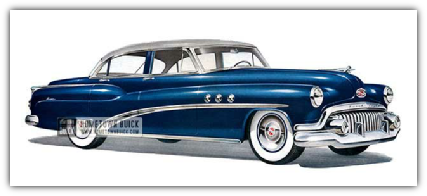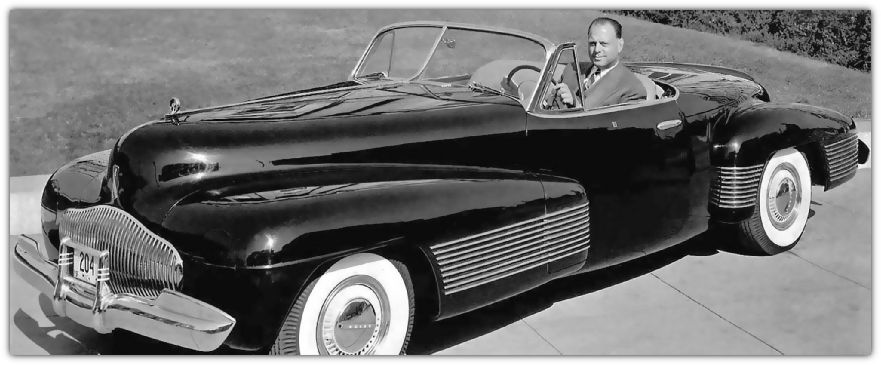
Harley Earl – the Inventor of American Car Design
1952 Buick Super Riviera Sedan (Model 52)
“That’s the Smartest Million Dollars BUICK ever spent”
A few years prior to 1952 Buick Motor Company embarked on an ambitious plan to invest over $ 1,000,000.00 in research and development for the 1952 Buick.
They proudly advertised in 1952 at the launching of the new model …
“That’s the Smartest Million Dollars BUICK ever spent”
· They poured the money into research and testing, design tools, engineering, production and components.
· Not only were there a number of new features with suspension and the ride but the inclusion of the new Dynaflow Drive… their innovative automatic transmission.
· This Super Riviera also had the optional power steering added and the tried and
true Fireball straight 8 engine, high compression and “valve-
· The models in 1952 included 3 series… Special, Super and Roadmaster.
· The name ‘Riviera’ was first used by Buick from 1950 to 1953.
Buick’s production in 1952 was the highest for a number of years and almost beat out all other makes.
§ Original price in 1952… $2,563.00
§ The car weighs 4,125 pounds
§ 320 cu in @ 128 horsepower
Buick is the oldest active American car company with the first car in 1899 and then was the cornerstone in establishing GM in 1908
Harley Earl was famous for designing all of the early 1950’s Buicks, the Corvetter, the Chevy Nomad, and various Cadillac including the Elderado Brougham, plus the famous FutureLina, a recent restoration sold for $3 million.
Introduing the “Longer, lower, wider” concept to car design and blending it with high perfoarmabce and aerodynamics
Inspiring such features as two tone paint, chrome trim, hidden spare tiers, turn indicators, disappearing headlamops, wrap around windshields, tinted glass and electric windows.
Harley Earl

The Unites States of America in the late '50s. Television, rock and roll, neon signs,
and eight-
Founding Earl Automobile Works in 1908. Back then, automobile factories usually only produced the chassis, which clients then brought to coachbuilders like Earl's for custom bodywork. Harley's choice of a profession is therefore not surprising. Once he was old enough, he began helping his father produce bodies for customers, which frequently included movie stars. Harley was so strongly influenced by his father's company that the future design star left Stanford University prematurely to go back to Hollywood and work with his dad.
The first car that Earl designed was the LaSalle, which also became the first American car whose lines were drawn by an actual designer rather than by just taking inspiration from a carriage. The success of the LaSalle at dealerships convinced General Motors management of Harley's talent, and the company decided to create the Art and Color Section of General Motors, and to name Earl as its first director. If you ever thought that all production cars from the early to late '20s were the same and wondered why no one hired a designer for them, then you should know that this was because the division headed by Earl was the first automobile company design department in the world.
The first concept car in the world was also Earl's work. In 1938, his team introduced
the Buick Y-
The 1948 Cadillac Series 62 came out with small fins on the rear wings. Their initial purpose was to liven up the Cadillac's appearance, but once the Space Age came around, the public began interpreting them in their own way. Every year, tailfins got bigger and bigger, and American roads and highways began to look more like an ocean being carved by razorback whales; meanwhile, the tailfins made buyers feel like they were no longer in a Chevrolet or a Ford, but in a rocket taking off for space! And outer space had to be very visible from inside the rocket. Which leads us to another one of Earl's ideas: the wraparound windscreen. In 1953, the world was given yet another one of Earl's creations that immortalised his name – the Chevrolet Corvette! However, the '50s came to an end, and Earl's career did with it. Harley retired in 1959 and died a decade later, in 1969.

Harley Earl
famous car designer in his concept "Y" Buick